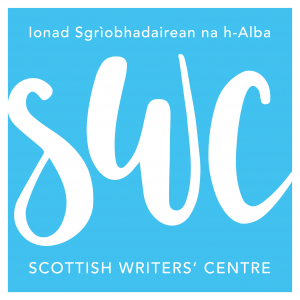Sunday 3rd September marked the closure of one of the CCA in Glasgow’s most triumphant exhibitions: The House that Heals the Soul. When I visited this temporary library in August, I saw a space dedicated to a love of literature, community, and generative discussion. The House that Heals the Soul offered an interactive exploration of the public library, its contributions to independent publishing, to cultivating a love of books, and to its possibilities of connection.

On the table in the exhibition lay the words ‘Books are nomadic objects’. This simple primer set up the library as a channel, a space for these nomadic objects to rest and pass through from reader to reader. The words echoed the work of Rosi Braidotti, whose contribution to nomadic theory permeated this library space. Braidotti’s work on the human subject is based on a study on ‘[b]ecoming nomadic, by constructing communities where the notion of transience, of passing is acknowledged in a sober secular manner that binds us to multiple “others” in a vital web of complex interrelations’. The book as nomadic object is thus a tool to help create these communities of nomadic subjects. From this perspective, the library provides access to the means of connection to others, always travelling, never resting.
How, then, are these constructions and connections deployed? Why is the space of the public library best suited for access to this web of interrelations? In a collection of short stories and texts titled Public Library, acclaimed Scottish writer Ali Smith interviews various famous figures on the unique space public libraries occupy in our lives. Pat Hunter, for example, notes that ‘[b]ecause libraries have always been a part of any civilization they are not negotiable. They are part of our inheritance’. Hunter’s statement does two things for the public library. First, it locates the library historically, emphasising its archival status as a record for stories, ancestry, and the desire to access them. Second, it draws attention to the inheritance itself: the nomadic object; the book. Our inheritance is our stories, shared across thousands of years. The physical space the public library provides, be it static or mobile, is as essential as the books it contains. It is a space which signifies a tradition which has gone hand in hand with Western society since its records began.

Tradition is a dirty word when it cannot be used to further the interests of the ruling class. Earlier this year, in an article for Huffington Post, Conservative MP James Cleverly commented on the closure of public libraries across the country, claiming it was more cost effective to distribute Kindles instead. His justifications form a textbook example of the disinterest right wing and technocratic mindsets maintain towards any institution that does not exist for profit:
“We didn’t get agitated over the closure of blacksmiths when people stopped riding horses and started driving cars,” he said.
People consume media in a completely different way,” he said. “We have these understandable, but slightly out of time, attachments.”
Aside from a gross misjudgement of the popularity of ebooks (recent figures show print book sales are on the rise again), Cleverly’s statement also places the library in a false position amongst the structures of late capitalism. The library is not a subscription service or store; it does not fulfill the same function as Amazon or Netflix. There is no such thing as ‘the consumer’ in the public library. It exists to provide people with free access to the material means of experiencing and learning about the world. It lends books, the greatest means of learning ever known; computers, for those who cannot afford their own in an increasingly online world, and a communal safe space in which media is available with no ulterior motive. Indeed, it is these very services that put the public library at risk in a political climate of austerity and neoliberalism which cannot fathom an institution that does not function entirely as either charity or business.
Hence the importance of exhibitions like The House that Heals the Soul: free access to an environment of egalitarian literary achievement. Its name evoked a sense of growth and safety, a space dedicated to the care of the self. Seminal works of literature and theory sat alongside self-published zines; chairs and tables were arranged communally, fit for round table discussions or for settling down with a book; a room of hanging booklets encouraged the same nomadic exploration a book provides, surrounding oneself with opportunities to learn, to grow, and to become (to return to Braidotti), with no expectation of payment or labour in return. A wide variety of distributary approaches for books were situated on its shelves- a section for The Walking Library for Women Walking, for example; an art project in which a collection of books submitted in answer to the question, ‘What book would you give to a woman walking?’ were taken for a walk on 26th August. This feminist project embodied a library’s capacity for movement and connection, a moving repository dedicated to an answered question. The answers given were never allowed to rest: they were taken ever forward: the books travelled, the nomadic object accompanying the nomadic subject, surrounding itself with new spaces. The project exemplified the accessible function of the public library, providing a communal contribution to the potential for connection that is so cultivated in the library sphere.

That the library lends itself so well to this progressive, connective ideology was a common thread in the exhibition, as presented by projects such as The Multilingual Library for Scotland, which encouraged people to create copies of books in another language they would like to see in Scotland, and leave them on the shelf. The result was a display of diversity as books in various languages, some in their original, some translated, took their places on the shelves. The library space dedicated itself to becoming a diverse, multilingual, multicultural site in which inclusivity and education was the common goal. This goal was achieved not through profit or so-called progress, but through the contributions of a community which sprang up around these goals.
The House that Heals the Soul marked a transitory space which demonstrated the irreplaceable benefits and social functions of the Public Library, as well as the imminent threats to their continuation. Each event, each installation and discussion which took place within it was another expression of the library’s capacity to connect people, to provide ways in which one can learn and grow. As Sophie Mayer says to Ali Smith:
The library is what Michel Foucault called a ‘heterotopia’, an ideal yet real and historically delimited space which allows us to step into ritual time (like the cinema and the garden). It is a site of possibility and connection (and possibility in connection).
Foucault’s perception of heterotopias relies in their ability to act as mirrors to a utopian ideal. In this way, the subject and their surroundings are displaced and projected into another world. The library exemplifies this concept in the same way the book does: as a presentation of the human capacity for life, history, and art. It is a space in which our greatest achievements are available to anyone, no matter their position or privilege. The ‘Free Public Libraries’ sign over the exhibition doorway was both a welcome to its visitors and a call to arms: public libraries are the histories of our cultures and the protectors of our stories. They must be protected.
Words and images by Alastair Millar
More information on the Walking Library Project can be found here.
More information on the Multilingual Library for Scotland can be found here.



